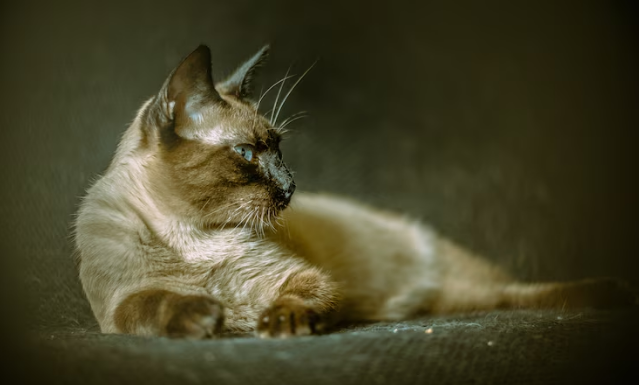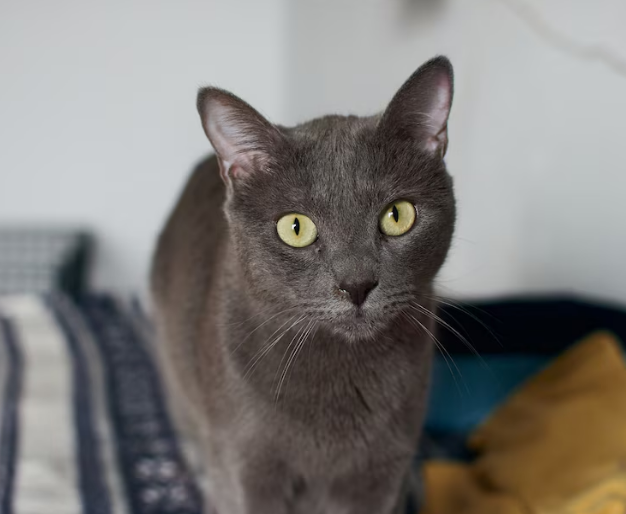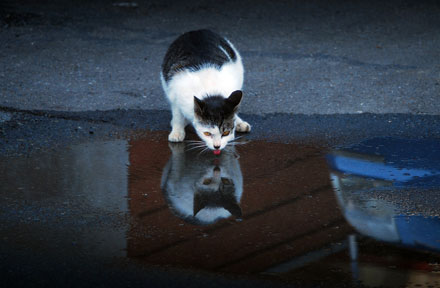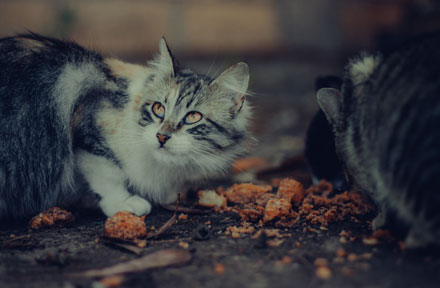Jun 18, 2025
Author:Jackson Watson

Think all cats are aloof and independent? Not this one. The Burmese cat flips that script entirely. This breed doesn't lurk in shadows or vanish for hours. It sticks to you like Velcro. Bold, affectionate, and endlessly curious, the Burmese doesn’t just tolerate human company—it demands it.
But here’s the thing: that charm comes with quirks.
Not every home is ready for a four-legged shadow that talks back, follows you from room to room, and insists on bedtime snuggles. That’s where this article comes in—cutting through the fluff to show exactly why Burmese cats win people over, and what it actually takes to live with one.
Here’s what you’ll get:
● Clear personality traits that set the Burmese apart from other breeds
● Behavior breakdowns—the good, the clingy, and the loud
● Social needs (and what happens if you ignore them)
● Activity levels and how they spend their energy
● Compatibility with kids, seniors, and other pets
● Real talk about grooming, care, and emotional upkeep
If you want a pet that’s more sidekick than furniture, keep reading. This isn’t your average lap cat.
Forget stereotypes about distant, standoffish felines. The Burmese cat is wired differently. It brings a personality that’s bold, present, and entirely human-oriented. You don’t own a Burmese—you cohabitate.
Unlike many breeds that keep a comfortable emotional distance, Burmese cats crave physical presence. They aren’t content to sit across the room. They’ll curl up on your laptop, nudge your elbow at dinner, or climb into your arms while you’re standing. This isn’t random affection—it’s routine behavior.
They're vocal, but not in the sharp or wailing way of Siamese cousins. Burmese cats speak in soft, raspy tones. It’s a low, persistent commentary on your every move. Some owners describe it less like meowing and more like gravelly muttering.
They’re also known for their loyalty—something more often associated with dogs than cats. A study published in Current Biology (Vitale et al., 2019) found that many cats form secure bonds with humans, and Burmese cats were notably more likely to demonstrate consistent attachment behavior than most breeds observed.
Here’s what typically defines a Burmese cat’s core personality:
● Affectionate to a fault — physical closeness is non-negotiable
● Talkative — soft-spoken but constant communication
● Loyal — will greet you at the door and follow you around
● Curious and fearless — investigates first, worries later
● Playful even into senior years — never really ‘grows up’
This breed doesn’t blend in. It inserts itself. Every hour. Every room. Every mood.

Living with a Burmese? You're not a bystander. You're involved—whether you signed up for it or not. This breed brings a lot, and yeah, it expects plenty back. If you’re used to cats that vanish for hours or nap in silence, you’re in for something else entirely.
● The Good: Burmese cats don’t play it cool. They lock in. They wait by the door. They trail your every move like it's scripted. And before you even sit down? They’ve claimed your lap, your keyboard, maybe even your shoulder. They feed off attention. Doesn’t matter if you’re tossing a toy or talking to yourself while doing dishes—they’re there for it. They track patterns. They listen. Some even learn a few routines or tricks, not because you trained them, but because they were watching.
● The Clingy: Here’s where it turns. That same affection? It can push boundaries fast. Leave them alone too long, and things shift. They don’t shut down. They act up. Yowling. Pacing. Pawing at doors like you owe them answers. They’re wired for closeness. If you don’t give them something to work with—play, talk, structure—they’ll improvise. Usually at your furniture’s expense.
● The Loud: The vocalization is constant, but not disruptive unless ignored. Burmese cats use their voice to check in, request attention, or respond to your tone. It’s not about noise—it’s about participation. They expect you to respond, even if it’s just with eye contact or a few words. Owners often describe it as a running dialogue rather than noise. But it doesn’t let up. Silence, in a Burmese household, is rarely on the menu.
This behavior set is what defines their charm, but it also requires the right match. You can’t leave a Burmese cat to its own devices and expect things to go smoothly. They need presence, structure, and feedback. Give them that, and they’ll return it tenfold.
These cats don’t clock in and out. Their need for connection is all day, every day. Burmese cats depend on social interaction to stay balanced, emotionally and behaviorally.
Their behavior isn’t casual companionship. It’s constant engagement. If you're in the room, they’ll be on your lap, by your feet, or trailing a few inches behind. They’re tuned in, waiting for cues, responses, and moments to insert themselves.
When those needs go unmet, they don’t shut down. They escalate. Burmese cats respond to loneliness with behavior shifts—some subtle, others disruptive.
Common signs of unmet social needs include:
● Excessive vocalization that starts early and lasts through the night
● Destructive behaviors like chewing cables or scratching furniture
● Overgrooming that leads to bald patches or skin irritation
● Aggression toward other pets or even household objects
● Lethargy paired with appetite changes
This isn’t mischief. It’s communication. Burmese cats don’t act out—they signal. When ignored, their mental health takes a hit, and the symptoms start stacking. The fix isn’t complicated. Structured attention, shared routines, and consistent presence go a long way. But if you’re looking for a low-touch pet, this breed will keep pushing back. Hard.
Burmese cats don’t idle well. They’re not content with lounging on windowsills for hours or watching dust settle. Their energy is consistent, focused, and often interactive. This isn’t a breed that tires out after one round of fetch or wand play—they’ll keep going as long as you do.
They kick off early—like, before you’re ready—and stay in go-mode most of the day. Then somehow? Still wired by evening. Movement, mess-making, nosey exploration... that’s not extra. That’s baseline.
Expect them to:
● Chase shadows, bugs, or moving feet
● Bat small toys around the room with obsessive focus
● Jump between furniture and balance on tight spots
● Snoop through drawers, bags, and anything half open
● They trail you, not randomly, but like they know something’s about to happen. Or hope it is.
Best way to keep that fire aimed at something useful? Give them jobs. Physical stuff. Little missions. Let ’em scratch, climb, leap around like tiny gymnasts. Something solid—like the WOpet Scratching Posts for Cats—gives them the green light to go hard without wrecking your table legs or pacing holes into the floor.
They don’t just play for fun. It’s stimulation. It’s territory work. It’s a mental release. And without it, frustration builds quickly. These cats aren’t hyper—they’re engaged. But only if you give them the tools and time to stay that way.
It’s wild how easily these cats blend in. Burmese temperament? Honestly, one of the smoothest around for homes with, well... a lot going on. Kids running around, an older parent, maybe a dog or two—these cats mostly shrug and roll with it.
They’re connection-driven. If someone’s paying attention—even a little—they’re in. Burmese cats lean into gentle hands, stable rhythms, and the kind of everyday interaction most pets tolerate but don’t chase. That’s why they click so well with seniors who want soft companionship or kids who actually listen when you say, be gentle.
And their patience? It’s real. They don’t flinch at sudden movement, don’t lash out unless something seriously crosses a line. You can hold them, talk to them, bring new people around—they won’t go running. If anything, they wander closer.
In multi-pet setups, they’ll usually feel things out and find their spot—no long standoffs or chaos. They signal with posture, sound, small stuff—not claws. Once the intro’s done right, Burmese cats often bond fast with other cats or even mellow dogs. Might even catch them grooming their new roommate.
What keeps them stable in diverse households is their emotional intelligence. They read the room. They respond to tone. They pick up on routine. These aren’t solitary cats—they’re built for connection, regardless of the shape it takes.
The coat? Sure—it’s manageable. But don’t let that fool you. What really keeps a Burmese cat stable goes well beyond brushing. You miss one of the three pillars—grooming, body care, or emotional check-ins—and things can spiral quicker than you’d expect.
They’ve got short, fine fur—nothing dramatic, no heavy shedding. Smooth, silky, pretty easy to maintain. But easy doesn’t mean optional. Skip the basics, and it catches up.
Here’s what actually keeps them looking and feeling right:
● Run a soft mitt or bristle brush over them once a week
● Check their ears and eyes—dust, buildup, random gunk
● Nail trims every 10–14 days (set a reminder, trust me)
● Teeth? Yep. Feline-safe toothpaste, a few times a week
That regular contact? It’s not just about hygiene. It builds trust. Burmese cats raised with this early? Way easier to handle later, at home, and in the vet’s office.
They don’t suffer in silence. When something’s off, you’ll know. Burmese cats tend to overeat if you’re not watching, so structure really matters—meals, portions, timing.
And hydration? Huge deal. Clean, moving water helps them drink more, especially if they’re on dry food. Something like the WOpet Water Fountain makes that piece automatic—fresh water, less guessing, better kidney support.
More basics worth keeping tight:
● Keep the litter box tucked in a low-traffic, calm spot
● Get annual bloodwork and health checks on the calendar
● Keep them indoors—outdoor hazards aren’t worth it
They don’t just want care. They want a connection. Burmese cats burn out fast without it. Emotional needs come in loud—and if you miss the cues, it goes sideways.
To keep that energy from turning into noise or stress:
● Set consistent blocks of time for meals, play, and reset
● Use puzzle toys or things that force a little brain work
● Give them 15–30 minutes of real play, twice a day
● Mix it up—swap toys, change room setups, shift the routine
They’re not asking for perfect. But they are watching. And when you give them even, structured attention? Everything tightens. They calm down, settle in, and the relationship sticks deeper.
This isn’t a breed you figure out later. Once you get clear on what makes Burmese cats tick, you start making better decisions from day one.
● You build routines that prevent stress.
● You spot emotional signals before they turn into problems.
● You manage energy instead of reacting to chaos.
● You maintain a connection without feeling overwhelmed.
The result?
● A calmer home with fewer outbursts and no guesswork
● Fewer behavioral issues are tied to boredom or loneliness
● Cleaner feeding and hydration routines that actually stick
● A stronger human-pet bond based on consistency, not trial and error
Most cats adapt to your lifestyle. Burmese cats invite you into theirs. WOpet supports the structure that makes that possible—so everything from feeding to emotional care becomes a little smoother, a little smarter, and a lot more rewarding.
Label:
Popular Post

What to Feed a Sick Dog With No Appetite? [2025 Guide]
May 16, 2023

Troubleshooting Common Issues with Automatic Pet Feeders: Tips & Tricks for Pet Owners
Oct 26, 2023

Why Does My Cat Cough After Drinking Water? 8 Potential Reasons
Mar 13, 2023

Why is My Cat Throwing up Water? Top 5 Causes Here
Feb 08, 2023

My Cat Only Eats A Little at A Time - What to Do?
Feb 27, 2023
$99.99
$129.99
Copyright © 2025 WOPET. All Rights Reserved.